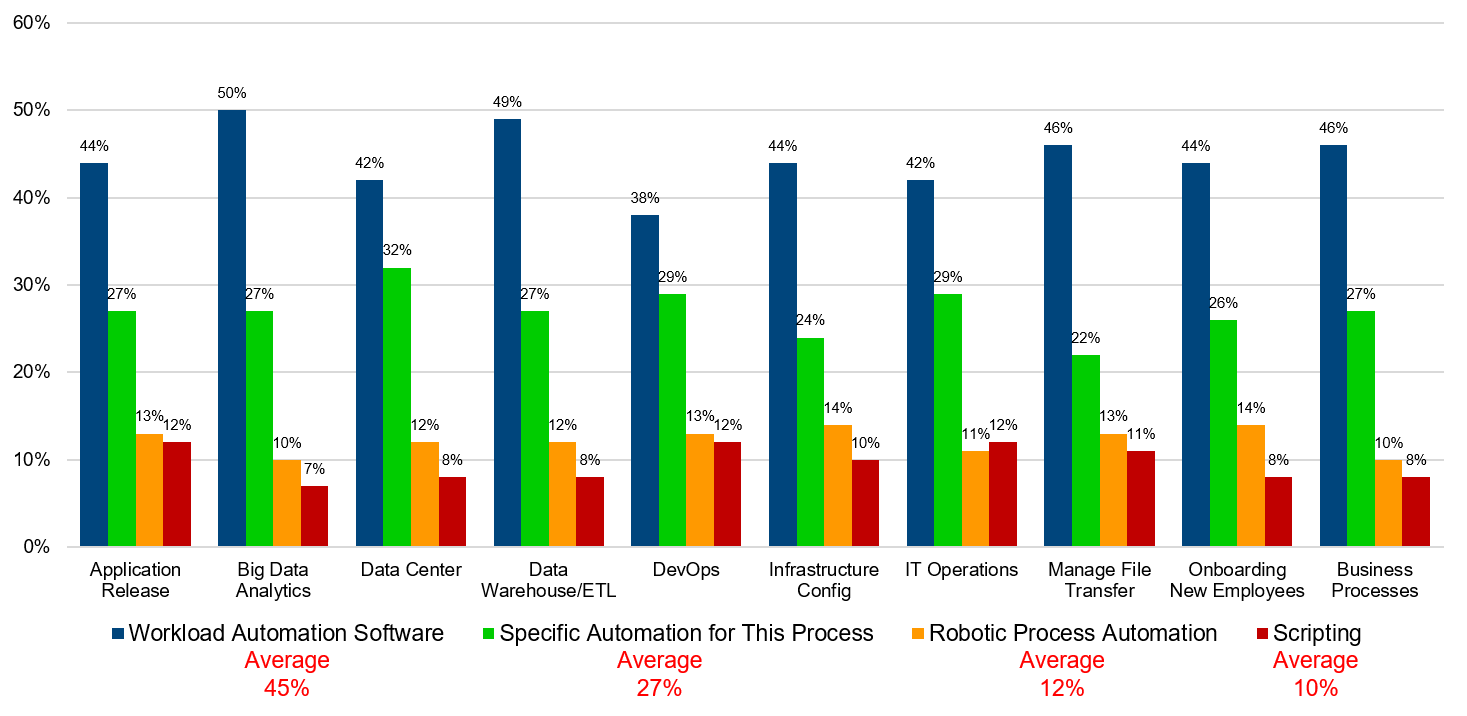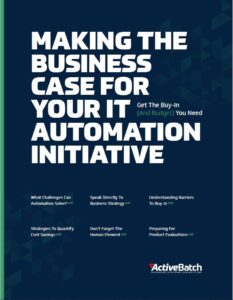Business Leaders Want Workload Automation (is IT falling behind?)
Research from EMA indicates that business leaders are driving innovation in Workload Automation, putting additional pressure on IT professionals.

Digital Transformation
The new maxim is that “every business is a digital business.” We hear it in earnings calls when the CEO talks about digital transformation, customer-centric services, or a digital-first mindset; the titles of new books allude to the maxim, start-ups identify it as a lifestyle, and thought-leaders can’t stop promoting it.
But how susceptible are business leaders to these constant calls for digital transformation? And what about Workload Automation? Are business leaders turning the corner on Workload Automation?
The answer, surprisingly, is that they’re turning the corner faster than most IT professionals.
According to new research from Enterprise Management Associates (EMA), business professionals, when compared to IT professionals, are taking a much broader view of Workload Automation (WLA).
Here is how the numbers from EMA’s research break down:
• 54% of participants in the study reported that, within their organizations, WLA is considered a key aspect of IT operations.
• While 30% of participants said WLA is considered a key aspect of a larger strategy towards automation or digital transformation.
Looking further into these numbers we see a split between how business professionals and IT professionals view Workload Automation.
• 57% of IT professionals viewed WLA as a key aspect of IT operations, with only 1/3 of business professionals sharing this view.
• 39% of business professionals viewed WLA as a key aspect of a larger strategy towards automation or digital transformation.
• While 28% of IT professionals held this same view.
More business leaders are regarding Workload Automation as a tool to drive larger, organizational strategies, whereas IT professionals, many of who have worked with WLA for much of their careers, continue to see WLA in its traditional role as a tool best suited for IT operations.
But technologies such as cloud computing, Big Data, and IoT are giving rise to a wave of new tools and practices that businesses are leveraging to provide superior, customer-centric experiences. Thus, the race towards digital transformation.
Business leaders understand the need for automation; and, among the various types of automation, Workload Automation continues to be the most common because of its ability to coordinate and consolidate disparate tools and platforms.

Workload Automation
As cloud computing, Big Data, and IoT become embedded in business models, IT professionals must be able to effectively manage their expanding workloads while remaining agile and responsive to rapid developments within their businesses.
IT professionals need reliable, agile, and scalable Workload Automation solutions, because they’re already feeling the pressure of digital transformation.
“The importance of WLA is on the rise as use cases for broader IT and business process automation are addressed with WLA by creative users.”
According to EMA’s research, over the last five years, the biggest demand facing IT teams has been digital transformation projects initiated by business leaders. Just as interesting (though not altogether surprising) is that, over the same 5-year period, there has been a 9% increase in Big Data projects initiated by business leaders.
These trends have been in place for several years, now; regardless, IT teams are still playing catch-up, trying to meet the changing demands and expanding workloads received from clients determined to leverage digital transformation for as much as it’s worth.
Architectural, Layered Automation
• 50% of respondents report having too many scheduling and automation tools.
• 60% use multiple WLA products.
• Over 1/3 use more than 3 WLA products.
Digital transformation is pushing IT professionals into greater roles within their businesses because digital transformation depends on IT. As a result, there is more data for IT to analyze, more tools to coordinate, more systems for IT to integrate.
Today, there is far more complexity for IT to manage, with many in the industry already managing too many silos of automation. Taking an architectural approach to automation is a popular solution, reducing sprawl and reining-in costs by coordinating and consolidating disparate silos within IT and across the business.
Advancements in cloud computing, Big Data, and IoT aren’t slowing down, and already we’re feeling the pressure Big Data and the cloud are having on IT.
According EMA’s research, the use of private clouds and SaaS solutions will soon become more common than on-premises environments. Which means big changes are still on the horizon for IT, their clients, and enterprise schedulers. If IT wants to float in these deepening waters, IT professionals can’t continue to rely on fragmented, insufficient point-solutions for their Workload Automation needs. IT needs to find a way to simplify, to stay agile and responsive to this rapidly evolving digital landscape.








